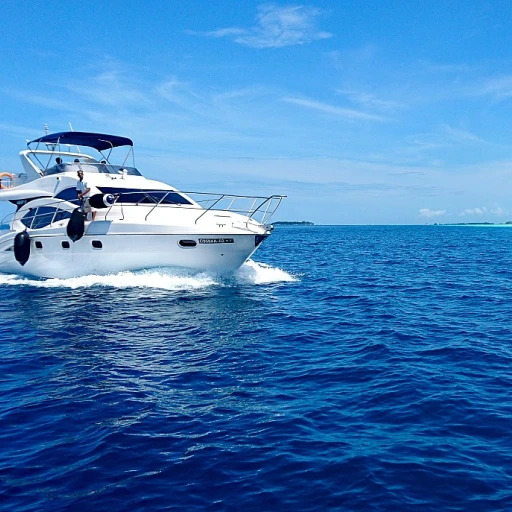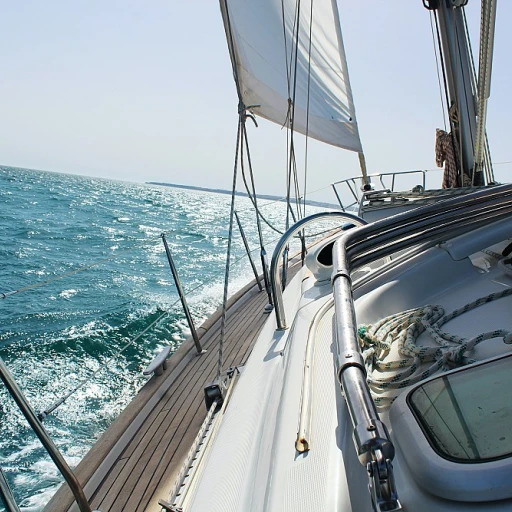
The Importance of Regular Safety Equipment Checks and Updates
A Vital Practice for Yacht Safety Management
As a leading analyst in the yachting world, I cannot overstate the importance of regular safety equipment checks and updates for yacht owners. Statistics show that most yachting accidents are preventable with proper safety measures in place. The U.S. Coast Guard reported that in 2020, there were 5,265 recreational boating accidents, many of which could have been mitigated with updated safety gear. Ensuring that life jackets, fire extinguishers, and navigation tools are in optimal condition is not just regulatory—it's a critical layer of protection for all on board.
Proactive Safety Measures: A Key to Peace of Mind
'The sea is selective, slow at recognition of effort and aptitude but fast in the sinking of the unfit,' once noted maritime author Felix Riesenberg. Preserving the integrity of your yacht's safety equipment is a testament to the owner's commitment to crew and passenger well-being. For instance, having a functional EPIRB (Emergency Position Indicating Radio Beacon) can mean the difference between a quick rescue and tragedy. The Global Maritime Distress and Safety System (GMDSS) mandates such devices, highlighting their importance in emergency situations.
Optimizing the Lifeline of Your Yacht
Yacht safety equipment is the lifeline in the face of adversity. Beyond the basics, sophisticated safety gear such as man overboard systems (MOBs) and state-of-the-art fire suppression systems come with intricate mechanisms that require regular scrutiny. According to BoatUS, nearly 10% of insurance claims are related to fire incidents, a sobering reminder that even the most reliable systems need consistent monitoring. Regular checks and timely updates do not merely adhere to safety protocols—they ensure that each journey is as secure as possible.
Examples of incidents where outdated or malfunctioning safety equipment led to dire consequences can be found in anecdotal cases as well as formal reports, reinforcing the need for proactive management. We will delve deeper into these lessons, shedding light on the ever-evolving landscape of yacht safety gear and why staying updated is paramount.
Ensuring Compliance with Maritime Safety Regulations
Any veteran yacht owner knows that staying abreast of maritime safety regulations is no small task. Safety equipment standards are frequently updated to reflect new technologies and lessons learned from maritime incidents. Yacht safety gear, such as life rafts, flares, and AIS (Automatic Identification System) beacons should be subject to rigorous checks against these evolving standards. Failure to comply can lead to significant legal ramifications, fines, and, more critically, compromised safety at sea.
Conclusion: Investing in Safety is Investing in Yachting's Future
In conclusion, while the advent of new safety innovations and the rigor of case studies on equipment failures are integral to understanding the dynamics of yacht safety, it all begins with the diligent update and maintenance of your yacht’s safety arsenal. Regular assessments of equipment condition, lifespan, and regulation compliance are the pillars that support the grand edifice of maritime safety.
Maintaining and updating your yacht's safety equipment is more than a regulatory requirement—it's an investment in yachting's future, in the serenity of your voyages, and most importantly, in lives. Whether you're setting out for a leisurely cruise or preparing for an extended voyage, let your safety gear be the beacon that guides you through the waters, both calm and tumultuous.
Top 5 Safety Equipment Pieces that Require Frequent Attention
Life Jackets and Personal Flotation Devices: Ensuring Personal Security at Sea
First and foremost among yacht safety gear are life jackets and personal flotation devices (PFDs). These items are not merely accessories; they are vital lifesavers in emergencies. A staggering 86% of boating fatality victims were reported not wearing life jackets, according to the U.S. Coast Guard. Regular checks for wear and tear, proper fit, and buoyancy are crucial. It is recommended that owners inspect life jackets before each voyage, and at least replace them every five years, as the integrity of the flotation material can degrade over time.
Fire Extinguishers: Combatting Potential Onboard Fires
Owners must ensure that their yacht fire extinguishers are up to code and in good working order. The National Fire Protection Association (NFPA) suggests that marine fire extinguishers should be serviced annually. Upgrades to newer models with better materials and increased efficiency can make a significant difference. For example, consider the switch from traditional extinguishers to clean agent variants that leave no residue and are effective against a broad range of fires.
Emergency Position Indicating Radio Beacons: Advanced Distress Signaling
To enhance rescue operations, there's a vital piece of equipment: the Emergency Position Indicating Radio Beacon (EPIRB). When deployed, an EPIRB transmits a distress signal to search and rescue services. Owners should test battery life and functionality regularly, as statistics show that the use of EPIRBs in emergencies has dramatically improved the outcome of rescue missions. It's wise to align with the latest technology upgrades for optimal signal strength and functionality.
High-Tech Navigation Systems: Guiding Your Voyage
Up-to-date yacht navigation systems are central to safety at sea. Modern systems offer features such as weather updates, collision avoidance, and detailed chart plotting. With around 75% of maritime accidents attributed to human error, often linked to navigation issues, according to the International Maritime Organization, it’s imperative for owners to keep these systems current. The latest software updates can refine performance and enhance safety measures, making each journey safer than the last.
Man Overboard Devices: Rapid Recovery Tools
A man overboard device is essential in quickly locating and recovering someone who has fallen off the yacht. Typically, these devices include wearable transmitters that send signals to the yacht's receiver. Owners should conduct regular tests to ensure they work properly. Integration with the latest technology, such as devices enabling GPS tracking, extends the search perimeter and significantly increases the chances of a timely rescue, transforming a once dire situation into a manageable one.
Innovations in Yacht Safety Gear: What's New and Why Upgrade?
Innovative Trends in Yacht Safety Equipment
As a seasoned analyst in the realm of yacht safety, I've observed a growing trend towards innovation and technology integration in safety equipment. According to recent market reports, the global yacht safety market is expected to see significant growth, which includes cutting-edge developments. It's crucial for yacht owners to stay abreast of such advancements. A stand-out example is the incorporation of AIS (Automatic Identification Systems) in life jackets, which now come with integrated GPS to aid in faster and more precise rescues.
Smart Yacht Safety: The Rise of Digital Solutions
Smart technology is paving the way for advanced safety protocols on yachts, with smart lifeboats that feature solar-powered distress signals and self-righting capabilities being a prime example. This aligns with statistical reports showing an increase in yachting accidents, thereby amplifying the need for more sophisticated rescue equipment. Such upgrades not only enhance safety but also align with the growing digitalization trend across the marine industry.
Proactivity Through Predictive Maintenance Systems
Predictive maintenance systems stand as a beacon of proactivity in yacht safety. These systems analyze patterns and predict potential failures before they occur, effectively reducing the chance of equipment malfunction. One might cite the foresight of engine monitoring systems that track performance and signal any need for preventive maintenance, a measure well-justified by statistics that indicate engine issues as a leading cause of maritime assistance calls.
Fire Safety Revolution: Advanced Suppression Systems
When it comes to fire safety, the marine sector's concerns are well portrayed by the global emphasis on advanced fire suppression systems. A vivacious advancement is the latest in 'clean agent' fire extinguishers, which combat fires without harming the delicate marine environment. This is a weighty consideration, seeing that marine firefighting equipment market valuation is expected to rise, as per industry forecasts.
Wearable Tech for Enhanced Personal Safety
The personal safety of crew and guests aboard can never be overstated. Wearable technology like personal locator beacons and immersion suits with thermal protection are gaining traction. Such personal safety devices have seen a notable uptick in usage statistics, underpinning their critical role in enhancing individuals' chances of survival during maritime emergencies.
Maintaining up-to-date yacht safety equipment is paramount, as detailed in the strategic guidance for yacht owners. Regular checks and updates are an owner's best defense against unforeseen incidents at sea. With advancements in technology continually emerging, proactive owners who embrace these innovations are setting the standard in maritime safety.
Case Studies: Lessons Learned from Yacht Safety Equipment Failures
Learning from Others: Real-Life Yacht Safety Mishaps
Understanding the crucial role that safety equipment plays in protecting lives and property at sea, real-world examples provide invaluable insights. According to Boat International, as many as 80% of maritime incidents could have been prevented with proper emergency preparedness, including up-to-date safety gear. Consider the case of the superyacht that encountered rough seas in the Mediterranean. Despite a well-trained crew, the inadequacy of their outdated life rafts led to a rescue delay, fortunately without loss of life. This instance underlines the need for regular updates in safety equipment, a topic emphasized in previous discussions of yacht safety.
High-Stakes Incidents: Analyzing Yacht Safety Failures
Another compelling case is that of the luxury yacht that experienced a fire while cruising tropical waters, a topic touched upon when discussing essential safety equipment. The outdated fire extinguishing systems were unable to contain the blaze, resulting in extensive damage. The U.S. Coast Guard's annual statistical report on maritime safety emphasizes that firefighting equipment must be in prime condition to be effective, noting that proper maintenance and regular updates can significantly reduce the likelihood of such disasters.
Upgrading to Save Lives: Tech Advances in Safety Gear
The remarkable story of a yacht saved by cutting-edge technology presents a case for upgrading to the latest safety measures, something explored when examining innovations in yacht safety gear. After a collision with a submerged object, onboard flooding alarms promptly alerted the crew, enabling them to take swift action with their state-of-the-art bilge pumps. Had this equipment not been recently updated, the outcome could have been far more dire.
Notably, The Yacht Report reveals that yachts equipped with advanced safety systems register a 75% higher efficacy in emergency response, stressing the benefits of embracing innovation in safety gear.
Enduring Impact on Yacht Safety Regulations: A Closer Look
- Reevaluation of International Safety Codes
- Introduction of Stringent Standards for New Gear
- Emphasis on Regular Training in Conjunction with Equipment Upgrades
In the aftermath of these incidents, maritime safety authorities often conduct thorough investigations that sometimes lead to stricter safety standards. For example, an extensive assessment following a well-publicized yacht evacuation due to life-saving appliance failure prompted increased regulatory scrutiny on safety gear functionality. This transition towards more rigorous requirements aligns with industry-centric statistics that suggest updated safety equipment increases survival rates by up to 30%, an aspect highlighted in prior discussions of yacht safety maintenance checklists.
A Checklist for Year-Round Safety Equipment Maintenance
Expert-Tailored Yacht Safety Equipment Maintenance Checklist
Ensuring yacht safety requires meticulous attention to detail, and statistics show that regular maintenance can prevent the majority of maritime mishaps. As an expert analyst immersed in the world of luxury watercraft, I vehemently emphasize the importance of a definitive checklist that guides owners in keeping their craft and passengers safe. Your yacht's safety equipment is the lifeline in unexpected situations, and diligent upkeep is non-negotiable.
- Personal Flotation Devices (PFDs): Inspect for wear and tear, ensure proper fit for all potential users, and confirm buoyancy retention. Replace PFDs every 5-7 years, or immediately if there's substantial damage.
- Fire Extinguishers: Verify expiration dates, check for corrosion, and ensure accessibility. Service or replace in accordance with the manufacturer’s guidelines which is typically every 1-2 years.
- EPIRB (Emergency Position Indicating Radio Beacon): Test battery life and functionality. According to maritime safety authorities, replace the battery every 5 years, or as per the manufacturer's recommendations.
- Life Rafts: Professional inspection is advised annually, as even a small leak or expired emergency supplies contained within can be catastrophic.
- First Aid Kits: Update medical supplies regularly and tailor the contents to the specific needs of those on board. Medications and solutions should be replaced every year to ensure efficacy.
Innovations in yacht safety equipment are continuously influencing maintenance practices. For instance, the advent of smart fire extinguishers that notify owners of depletion or malfunction can dramatically improve reaction time in emergencies and should be embraced.
Streamlining Safety Through Smart Technology Integration
"The integration of 'smart' safety solutions offers unprecedented peace of mind for yacht owners," experts state, highlighting developments such as automated MOB (Man Overboard) systems and advanced navigation aids. With 70% of marine accidents attributable to human error, as per maritime safety reports, the adoption of these advanced systems can significantly reduce risks. They often require less frequent updates but need regular checks to confirm their software and hardware components are functioning optimally.
Learning From Others: The Value of Proactive Safety Maintenance
Case studies have repeatedly shown that negligence in safety equipment maintenance could lead to dire consequences. Therefore, staying informed on emergent safety features and adhering to proactive maintenance not only extends the life of your yacht but also ensures the wellbeing of everyone on board. Keep abreast of the latest recalls, innovations, and best practices in yacht safety equipment to steer clear from the troubling waters of oversight.
Year-Round Vigilance: The Captain's Role in Safety
Ultimately, the captain or yacht owner's role in maintaining safety equipment is imperative. Regular scheduled check-ups, immediate action upon damage discovery, and staying educated on safety protocol transformations are the pillars of effective yacht stewardship. Let passion for the sea and commitment to passenger safety guide every entry on the maintenance checklist, ensuring a harmonious and secure voyage every time you set sail.

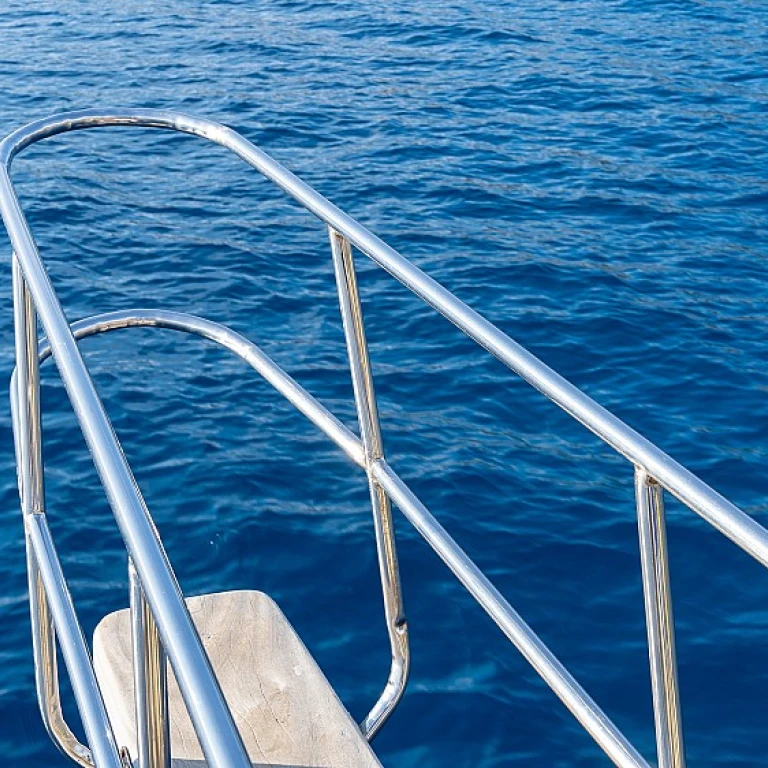
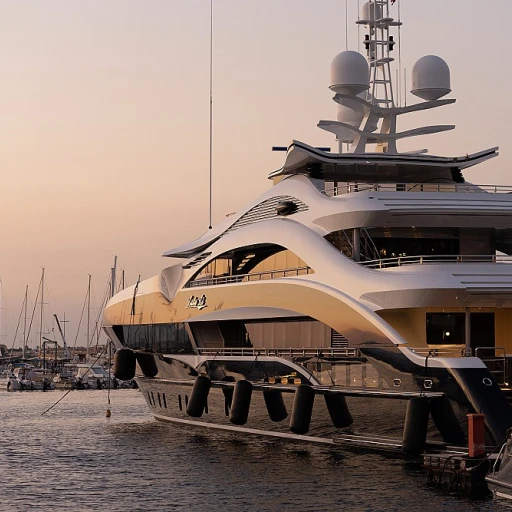
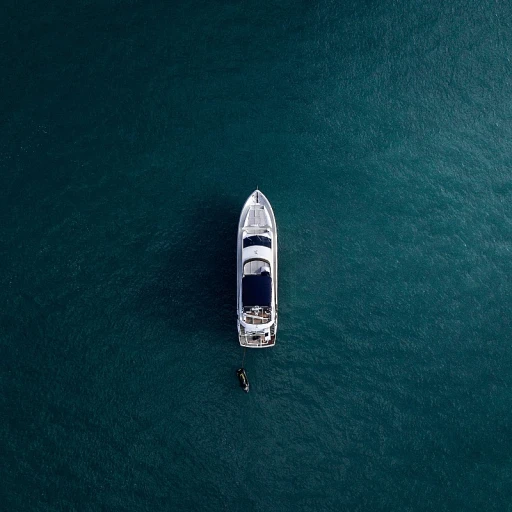
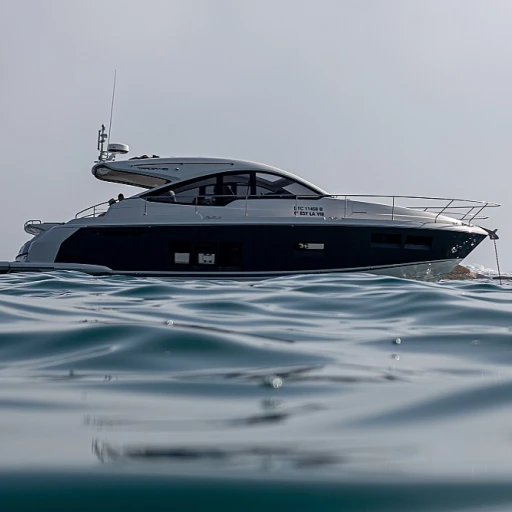
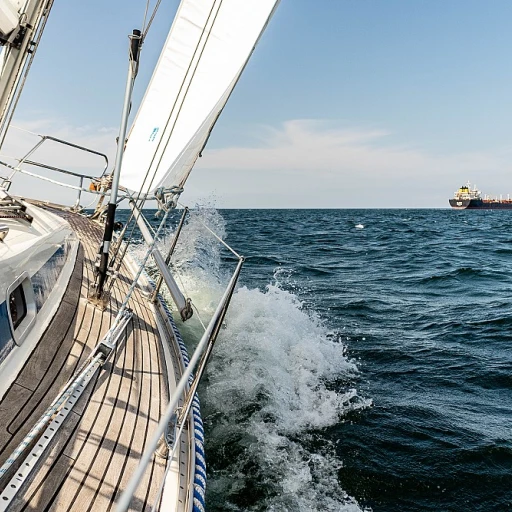

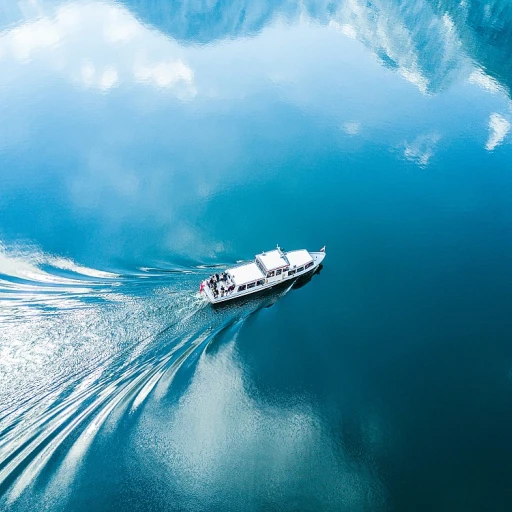
-large-teaser.webp)

